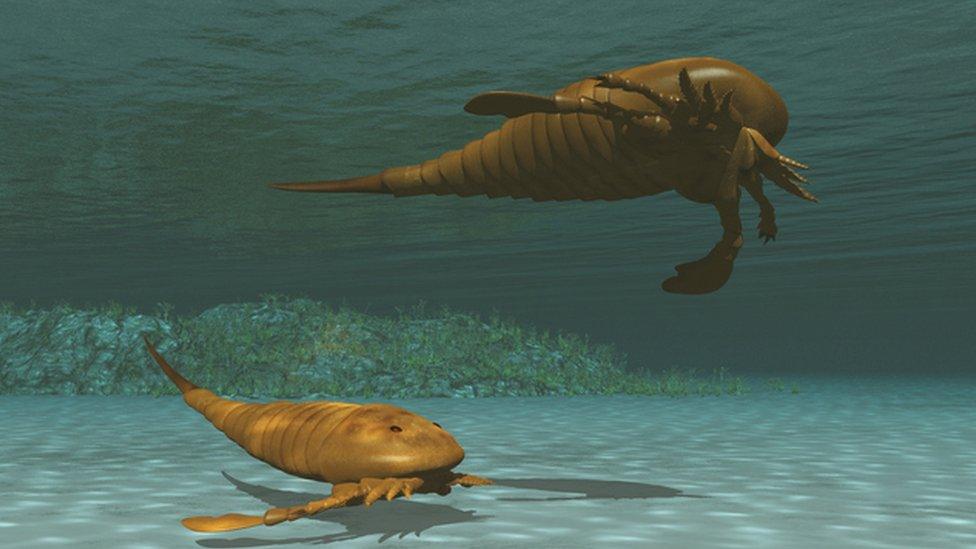New Mexico scientists find ancient giant sea scorpion
- Published
- comments

This is what scientists think ancient sea scorpions used to look like
The fossil of a giant sea scorpion that lived millions of years ago has been found in New Mexico in the US.
The ancient species was over one metre long and fed on crustaceans such as small crabs.
According to researchers from the New Mexico Museum of Natural History this type of giant scorpion fossil is extremely rare - it's the fourth one ever reported from the US.
The team think it could be the most reliable fossil of its kind discovered so far!
Think this little guy looks fierce? Imagine one a whole metre long!
The giant scorpion fossil
The fossil is over 307 million years ago - and its Latin name is Hibbertopterus lamsdelli.
The scorpion fed on small prey, like worms and tiny crabs, in shallow water.
The team say it's from a family of aquatic arthropod invertebrates.
Aquatic - lives in the water
Arthropod - invertebrates that have a skeleton outside their body, a separate body, and attached legs or arms.
Invertebrate - any animal that does not have any bones
A beetle is an invertebrate arthropod - but this one is not aquatic!
How did the team find the giant scorpion?
The fossil was found in a quarry bed - soil and rock at the bottom of a quarry.
This site is called Kinney Quarry, the bottom is known as the "fish bed" because of all the fossils of fish found there.
Although giant sea scorpions are rare, you're more likely to find them in this specific type of rock, especially in America and Europe.
Scientists can learn a lot from looking at fossils - especially about the shape of animals, and where they might have lived
Rock solid evidence
The research team think it could be the best giant ancient sea scorpion they have found so far!
The fossil shows the scorpion had started to molt - which is when animals shed old skin to make way for new growth.
The team will now study the fossilised scorpion to learn more about how the creature lived.
- Published31 January 2023
- Published29 January 2023
